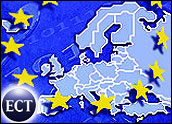
Threats from hackers are converging — not just coming in on e-mail, or over the Web, or via Instant Messaging (IM), but through all three media, simultaneously, heightening the threat level that computer users are facing.
This week, MessageLabs released its “Q2 2006 Intelligence Report,” detailing the surprising trends in security for April through June. Other analysts concur with the assessment.
MessageLabs is seeing a growing amount of “interconnectivity” linking viruses, spam and spyware, for example, quickly making a harmless looking e-mail a more serious Web threat.
New Development
“The increased convergence of threats across e-mail, Web and IM, combined with the increased sophistication of techniques, is an interesting new development,” said Mark Sunner, chief technology officer, MessageLabs. “Today, we see a growing number of e-mails and IMs containing links to Web sites where malware or spyware is automatically downloaded, as opposed to the traditional method where the message itself has a piece of malware attached. So, a harmless looking e-mail can quickly become a Web threat.”
The following are additional key highlights from the report:
- Spam rates are on the rise while cyber threats such as viruses and phishing attacks increasingly shift from traditional methods to more targeted attacks.
- The global ratio of spam in e-mail traffic rose to 64.8 percent in June, an increase of 6.9 percent over the previous month.
- For the second quarter, the global spam rate was 60.4 percent, 7.8 percent below the same period in 2005.
MessageLabs researchers said phishing e-mails accounted for 18.6 percent of all malicious e-mails intercepted by MessageLabs in the second quarter.
Israel continues to be the world’s top spam target, with spam representing 75.9 percent of Israel’s e-mail traffic, up 11.9 percent since May.
For viruses, India remains the nation most under attack in the aftermath of the Nyxem.D outbreak in February. June is the fourth consecutive month India has topped the virus chart.
“Just as we once viewed spammers and virus writers as two separate forces, which then rapidly merged, we are now also seeing spyware distribution adding to this mix,” said Sunner. “For example, we have seen more evidence of spammers employing spyware to make their campaigns more effective. This leaves businesses with the increasingly complex challenge of securing company data and intellectual property without sacrificing important avenues of employee communication.”
The chemical and pharmaceutical sector remained at the top of the spam chart for the second month in a row, up an additional 11.1 percent, said Sunner.
ISPs Clamping Down
It is estimated that spam comprises 60 percent or more of the world’s e-mail traffic. That’s forcing ISPs to work together to solve the problem, as demonstrated by the emergence of groups like the London Internet Exchange (LINX), an association of 220 ISPs.
Richard Clayton, who holds a doctorate in computer science from Cambridge, heads the research for the group of ISPs.
“E-mail is not just a technical problem, but a market failure compounded by regulatory deficiencies,” Clayton said.
Though spam is considered a global problem, there are some nations which don’t seem to have the problems that the U.S. and Western Europe do. The volume of spam sent from Australia has declined by more than 50 percent in the nine months ending in June, according to a new snapshot survey by anti-spam solution vendor New Millennium Solutions (NMS).
Unwanted e-mails originating from Australian sources fell from 9 percent of all spam received in October 2005, to 6.42 percent in February this year, to only 4.26 percent in the first two weeks of June.
The NMS survey counts the percentage of spam received by a sample of the company’s small to medium enterprise (SME) users in two-week periods.






















































Social Media
See all Social Media